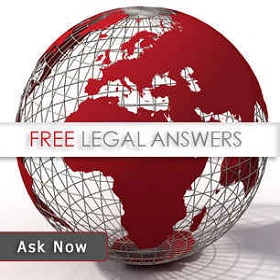Patent in USA - United States
A patent is an exclusive right granted to a patentee for an invention, In United States of America patent protection is governed by the patent act. An invention may be a new product or anew process that gives a new technical solution to a problem. Famous inventions that we are all well aware of include the paper clip, the light bulb, the zip fastener and the ubiquitous post it notepad.
Since 8 June 1995, the United States Patent and Trademark office has provided inventors the option of filing a provisional application for patent. Provisional patent applications may be filed by both US and non US applicants. The provisional application does not need to include claims of knowledge the prior art. However, the written description and any wings of the provisional application must adequately support the subject matter to be claimed in the later filed regular application in order to benefit in the provisional patent application filing date. In addition, the specification should disclose the manner and process of making and using the invention in the detailed manner as to enable any person skilled in the relevant art to make use the invention.
Provisional applications are not examined on their merits and cannot sure into issued patents. Provisional applications cannot claim the benefit of earlier filed application (whether foreign or domestic). So, foreign provisional patent applications should file the US provisional applications about same time that they file their home country application, and not rely on being a Paris Convention application up to a year later. In addition, provisional publications are not subject to a search and examination, and do not undergo publication. Compared with regular applications, provisional publications are cheaper and easier to file.
The application may claim priority benefits from the earlier filed provisional application by filing a regular patent application within 12 months from the filing date of the provisional application. The patent issuing on the regular application will then have a 20 year life from its filing date and not the filing date of the provisional application. The regular application filed within one year does not have to be identified to the provisional application it replaces. Thus, the regular application can serve the function of a continuation in part application (which can include both new and old subject matter) but without having the down side of an earlier filing date (for the purpose of calculating the term of the resulting patent). However, if new matter is added to the regular patent application, the application will not get the benefit of a filing date for the new matter until such time as the regular patent application is actually filed.
An applicant may convert an earlier filed provisional patent application into a non-provisional application. However, converting a provisional patent application to a non provisional application (as opposed to filing a non-provisional patent application claiming the benefit of the provisional application) will have a negative impact on patent term, since the term of a patent issuing from a non-provisional application resulting from the conversion of a provisional application will be measured from the original filing date of the provisional patent application.
As for the criteria of non-obviousness, a patent may not be obtained if the differences between the subject matter sought to be patented and the prior art are such that the subject matter on the whole, would have been obvious at the time of the invention was made, to a person having ordinary skill in the art. So, even if the subject matter sought to be patented is not exactly shown by the prior art, and involves one or more differences over the most nearly similar thing already known, a patent may still be refused if the differences would be obvious to a person having ordinary skill in the area of technology related to the invention.
Usefulness simply refers to the condition that the subject matter has a useful purpose. So, a machine that will not operate to perform the intended purpose would not be considered useful, and therefore would not be granted a patent in the United States.
Get a Patent in USA - Contact







